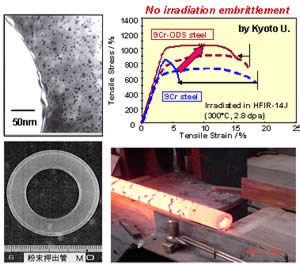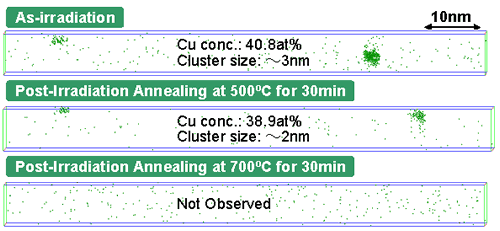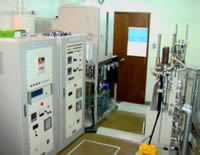Innovative Nuclear Materials R&D
For the 21st century’s advanced sciences and technologies to bring about enormous contributions to the human beings, highly advanced and innovative control methods for the collective behavior of particle beams are being pursued. In the experiments of beam direct energy conversion shown in the photo, a conversion efficiency as high as 87±6% has been achieved, by converting ion beams’ kinetic energies directly into electricity through electrostatic fields for deceleration of the beams.

Formation of Non-equilibrium Phases by Energetic Particle Beam Utilization
Evaluation of materials performance under extreme environments has been demanded. Irradiation environment is one of the extreme environments for materials, and the effects of displacement damages and nuclear transmutation on materials performance have been investigated. Energetic particle irradiation often induces a non-equilibrium phase. The figure shows nano-scale copper precipitates after 28MeV electron irradiation at 290°C, of which the role was explored by means of 3D-APFIM, TEM and PAS techniques.

Mechanism of Environmental Assisted Cracking of Advanced Steels
Understanding the mechanism of environmental assisted cracking of advanced steels is necessary. Crack nucleation and propagation mechanisms in transmutation helium embrittlement under fusion environment, stress corrosion cracking in light water reactor and hydrogen embrittlement in air have been investigated for low carbon austenitic steels, reduced activation ferritic steels and oxide dispersion strengthened steels using each experimental simulator. R&D of integration studies of materials-environment system has been conducted to extract each interaction among environment, material and applied stress.




